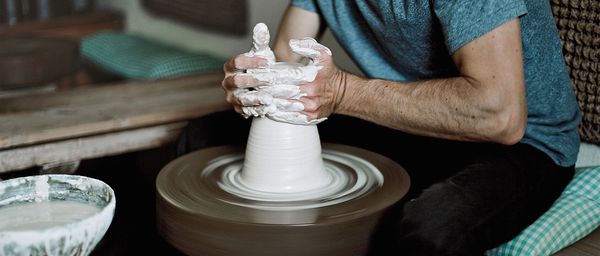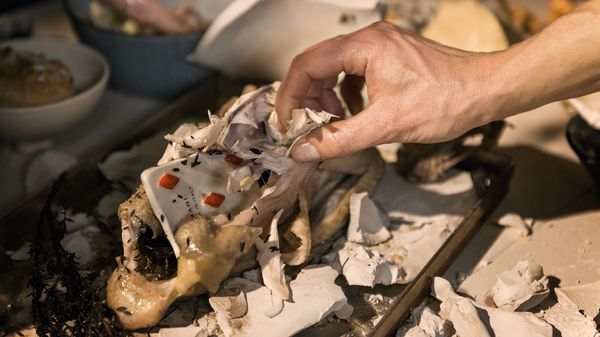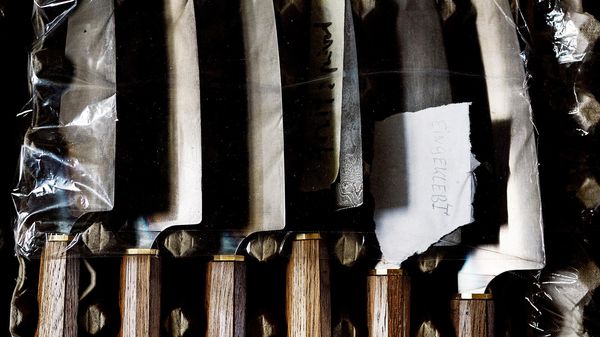
Matthias Kaiser uses clay from this Styrian homeland to make jugs, bowls and sculptures inspired by Japanese aesthetics.

Your ceramics are popular the world over, but where specifically do your influences come from?
I grew up in Graz, a medium-sized city in Austria; my parents were biologists and so we spent a lot of time outdoors with them – and our house was full of animals, including toads and a bat. This close connection to nature, this awareness of units and structures, has certainly moulded me. I wasn’t conscious of it doing so at the time, of course; it was intuitive. Things you learn early are what shape your mind and perceptions.
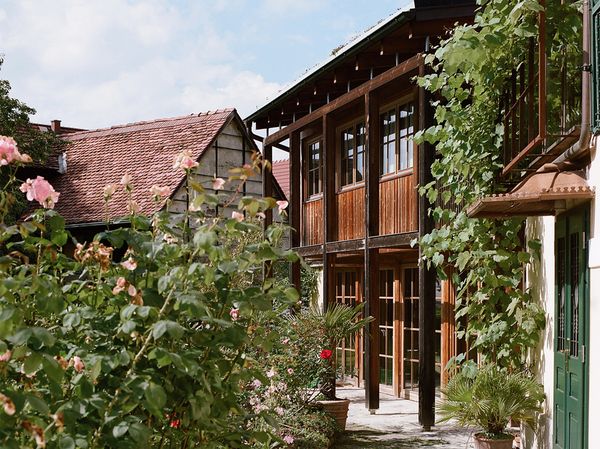
Back then, though, it wasn’t ceramics that you were interested in, but rather music – jazz music…
Music was a completely new stimulus that I came to through friends at grammar school. I was a complete mess at school: I never managed to get my leaver’s certificate, nor did I finish vocational training or complete a degree. I just could not get along with officialdom, and I never felt like a needed a stamp of approval on anything I did, either. I was interested in the substance of the matter, about experiences I could have. So I would go out and get what I needed until I felt I’d had enough, and then I’d move on to the next thing. I never thought for a moment about consequences, career planning, anything like that.

And what brought you to New York? Music – or were you already into ceramics at that point?
I went to New York to play saxophone, but I was soon using my fingers to manipulate something quite different: clay. I felt the need for something natural and familiar in my room, and so I used clay to make swallows’ nests – swallows mix mud and saliva to make their shelters overhead, and I did the same, hanging the models on the ceiling. It was the first time I’d used clay. A short time later, I came across a ceramic stall at an arts and crafts market, and I was particularly fascinated by a piece of porcelain with the patterning of a sponge in speckled cobalt blue. That made me sign up for a ceramics course, which I paid for with earnings from various jobs in restaurants. I took to pottery with ease, and so went on to a ceramics course at Parson’s School of Design in New York. I was often the last one out of the workshop in the evenings, and slowly, the saxophone became less of a priority and fell away entirely. So switching from a harmonious saxophone to a potter’s wheel was a gradual process.
How did you end up in Asia?
During my degree, I found myself being particularly interested by objects from Asia and started reading everything about them I could get my hands on. At the time, I was in a relationship with a Japanese woman who got me in touch with a master craftsman in country. I used the six months before leaving to learn the language and find out as much about life in Japan as I could. The thing is with me: if I do something, I dedicate myself to it with all my enthusiasm.
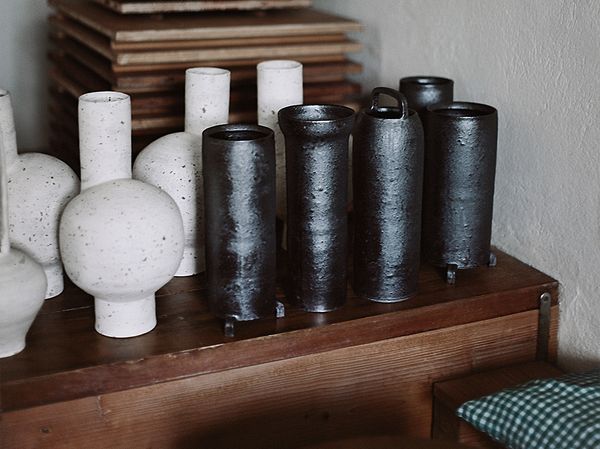
What is the greatest difference between western and Japanese techniques?
At first, I could not understand what my Japanese teachers found so attractive about earth-coloured, asymmetric, often quite imperfect objects. It took me a while until I realised that they wanted to see a story, not worship a shiny item. Noticeable traces of the making process reveal more about the potter and about the materials involved, while signs of use – damage, even – add a narrative aspect to the piece. So the main thing is not technique, but showing character as it relates to materials and the dimension of time. This aesthetic approach almost certainly comes from Shintoism, a belief system which attributes agency to nature.
So irregularities are particularly valued?
As a Western observer, the first thing that springs to mind is probably clumsy handiwork – but that impression is deceptive, because it’s about becoming so at one with the techniques of the art that it becomes superfluous to demonstrate skill. This is a long, long journey, and it is said that you can tell how old a potter is from the tea bowls, called chawan, that they produce. The bowls are intended to reflect the person as a whole, and this person is not perfect either – and is mature enough to not need to pretend that they are. In this way, authenticity is characteristic of the whole manufacturing process; the materials chosen have something to say, and the consistency of impure clay – with all its various earth elements such as iron ore, sand and quartz – add an extra dimension to the tsuchi-aji, the flavour of the clay. This respect for basic materials is what allows the artist to take a step back and enter into a dialogue with the resources used.
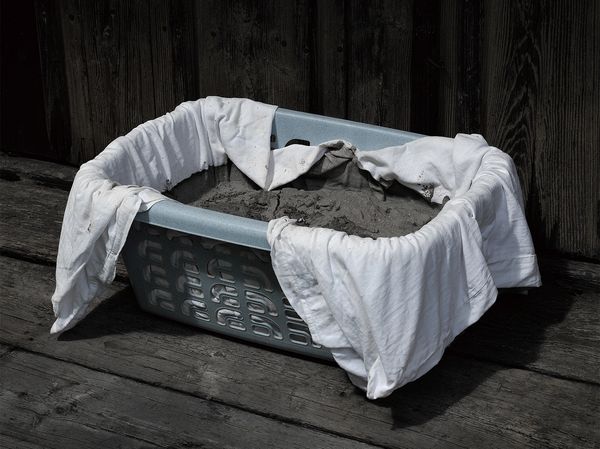
Where do you get your inspiration from?
For me, creativity is a kind of reservoir which gets filled up over the years, in which different things, old and new, start to mix – and which you can dive into for ideas. I was always searching for immediacy, for authenticity in my experiences, and it all flows in: the visual, the spiritual and many dark things, too. It helps to be open and aware, and perhaps my receptiveness to some things has been sharpened by my experiences with nature. Again and again in my life, I have exposed myself to situations which have shaken me to the core; moving to other countries and starting to work without even understanding the language is an experience of being vulnerable; this, in turn, creates wounds and sensitises you. The result is that you feel less secure, but that you’ve had enriching experiences.
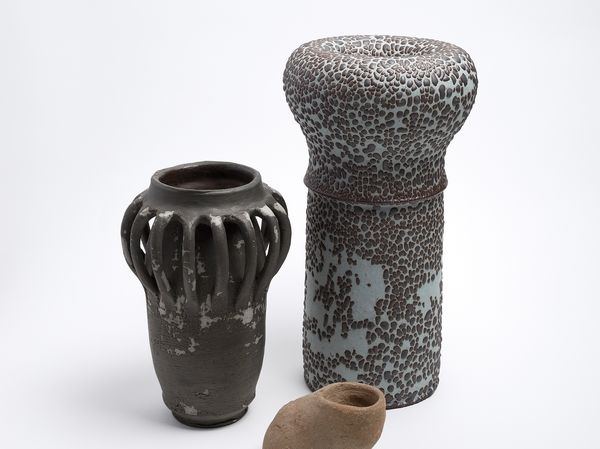
You’ve now reached a point where you can live well from your art. What does money mean to you?
Luckily, I’ve never had a problem parting from my pieces. I see each piece as a step on the stairwell to even better work; selling my work gives me space to develop. The danger of financial success is that it can tempt you to take a more commercial route, and that’s something I try to avoid. If I ever get the feeling that I’m not being challenged enough creatively because lots of customers are asking for the same sort of work, I invent a new project like The Loyal Exports: that’s an annual initiative in which I sell exciting new work for €1 a piece at local marketplaces in India or Africa.
Some of your most successful pieces are chawans. What do you drink from this form of bowl?
Chawan means “tea bowl”, and they’re specifically intended for matcha, a powdered green tea drunk at tea ceremonies, but also on a day-to-day basis, in Japan and Korea. The bowls are big – closer to cereal-bowl size – as the tea is whipped up inside them with a whisk made of bamboo. As an object, chawan have a deep cultural significance, however, and it’s no exaggeration to read them as live sculptures. The refinement at the basis of each aspect of their form and surface is of great interest. These attributes cannot be falsified or simulated, but are the result of improvisation and, once produced, cannot be recalled or improved – just like music. That’s the challenge, and measured against it, my chawans are still very much the work of a beginner.
Do you have a favourite?
I like to use ceramics produced by other artists I’m friends with, or antique pieces, more than my own work. Drinking from my own bowls, it’s often hard for me to see beyond what I don’t think was good enough about them. That’s strange inasmuch as I actually like blemishes – such as the ones on my favourite bowl, which I bought at a bazaar in Mumbai. Although it’s a factory piece, it’s got so many imperfections that it has its own charming personality.
